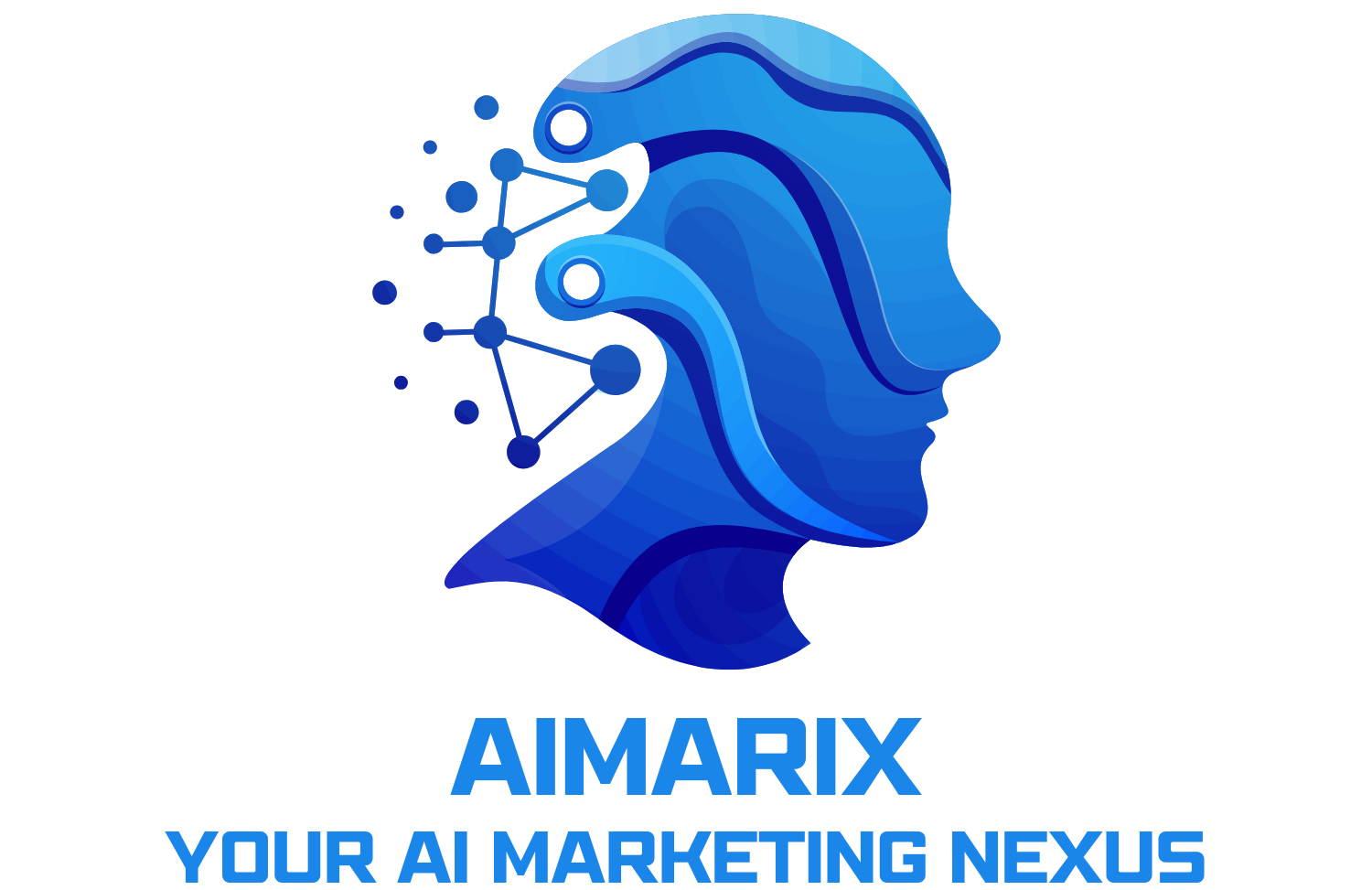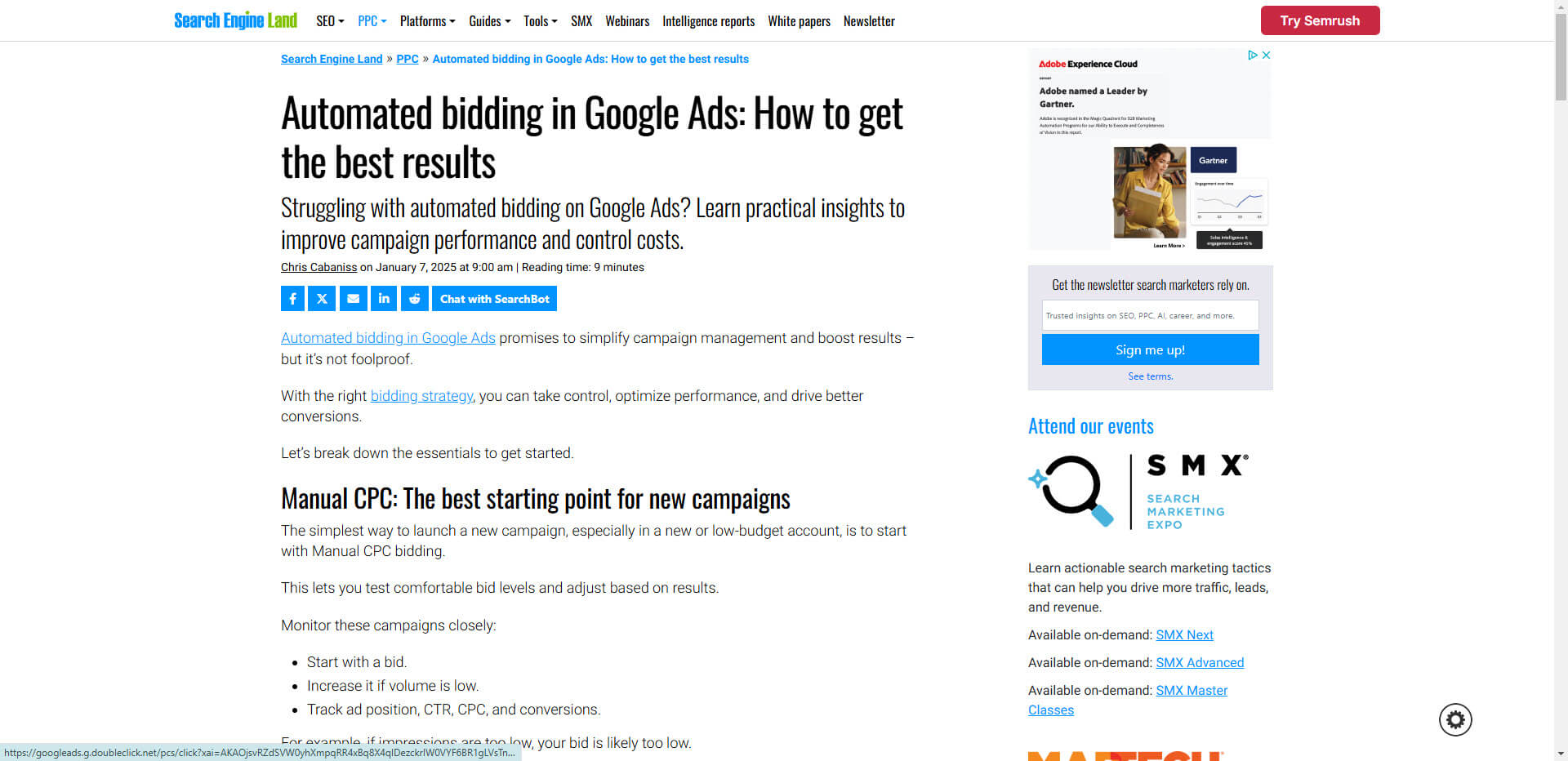If you’re looking to optimize your Google Ads campaigns in 2025, you’ve likely encountered the ever-growing list of automated bidding strategies. Each promises better results, yet not all are created equal—or suited for every business goal. In this article, we’ll examine why you should start with manual CPC, the pros and cons of the latest automation options, and how to choose the approach that aligns with your data and objectives.
1. Begin with Manual CPC to Gather Actionable Data
Why Manual CPC Matters
- Learning Period: Start with manual bidding to establish baseline metrics like cost per click (CPC) and conversion rate.
- Data Accuracy: Automation relies heavily on historical data. Without enough of it, Google’s algorithms may spend your budget inefficiently.
Transition Point
- Once you see stable performance metrics and have at least 50–100 conversions per month (varies by niche), you’ll have enough data for smarter automation.
2. Maximize Conversions
Key Benefits
- Focus on Volume: Ideal for advertisers looking to increase conversions quickly.
- Machine Learning Power: Google optimizes bidding in real-time to find audiences more likely to convert.
Potential Pitfalls
- High Initial Costs: If your account lacks historical data, Google may bid aggressively.
- Limited Control: Without proper constraints, you could run into budget overruns.
When to Use
- You have a steady flow of conversions and want to boost volume, even if it means a potentially higher cost-per-conversion.
3. Target CPA (Cost Per Action) and Target ROAS (Return on Ad Spend)
Advantages
- Cost or ROI Focus: Allows you to set a target cost or return, aligning bids with profitability.
- Stable Performance: Can yield consistent CPAs or ROAS if your data is reliable.
Drawbacks
- Data Hunger: These strategies need robust historical data to be effective.
- Over-Correction: The algorithm might overbid or underbid if performance fluctuates unexpectedly.
Best Fit
- Businesses with clear cost or revenue goals, enough monthly conversions, and stable performance to feed the machine learning algorithm.
4. Maximize Conversion Value
What It Does
- Optimizes bids to maximize the total value of conversions, rather than conversion volume.
Ideal Use Cases
- E-commerce stores where every sale carries a different profit margin or transaction value.
- Companies offering multiple products or services with varying prices or lifetime values.
Watch Outs
- Accurate Tracking: Make sure your conversion value tracking is fully accurate; otherwise, the strategy can misallocate spend.
5. Portfolio Bidding
Overview
- Allows you to group multiple campaigns under a shared bidding strategy, providing a holistic approach.
Pros
- Streamlined Management: Lower maintenance if your campaigns share similar goals.
- Centralized Budgets: Allows Google to allocate funds where they’ll be most effective.
Cons
- Cross-Campaign Dependencies: Poorly performing campaigns could affect better-performing ones if not managed carefully.
6. Which Strategies to Avoid—And When
- Maximize Clicks
- Great for driving traffic, but not necessarily quality leads or conversions.
- Consider only if brand awareness is your primary KPI and you have a significant budget.
- Target Impression Share
- Ensures your ads show up in a specific position or share of impressions.
- Usually beneficial for brand-building or dominance strategies with large budgets.
- Enhanced CPC
- Google is phasing out Enhanced CPC. Prepare to transition to alternative bidding solutions.
7. Aligning Bidding Strategy with Goals
Ask Yourself
- What’s Your Key Metric? CPA, ROAS, sales volume, or traffic?
- What’s Your Budget? High-volume goals might require bigger spend.
- How Mature Is Your Data? Automation needs historical performance to be accurate.
Action Steps
- Audit your account’s performance data.
- Pick a strategy that complements your primary goal.
- Test and Compare results, using small budgets or short time frames to validate.
8. The Future of Bidding in 2025
Advanced AI-Driven Optimization
- Expect Google to rely even more on machine learning for predictive bid adjustments and real-time personalization.
Privacy and Data
- With evolving data regulations, Google continues balancing user privacy with advertiser insights.
- Reliable first-party data becomes even more critical for automated bidding to succeed.
By starting with manual CPC, you lay the groundwork for data-driven decision-making. As your account matures, explore Maximize Conversions, Target CPA/ROAS, or Maximize Conversion Value to optimize spend and performance. Portfolio bidding can simplify management across multiple campaigns, but steer clear of Maximize Clicks or Impression Share unless you have specific, high-budget objectives. Finally, plan to transition away from Enhanced CPC as Google deprecates it. With the right strategy and sufficient data, automated bidding in 2025 can be a powerful driver of Google Ads success.
Source: Search Engine Land

